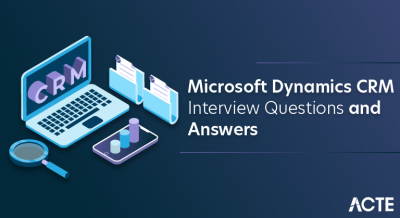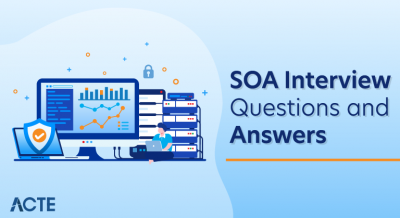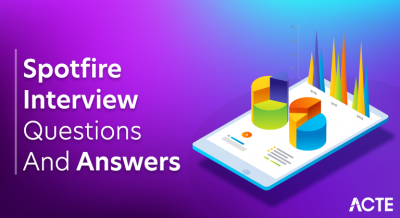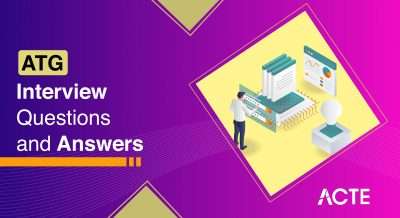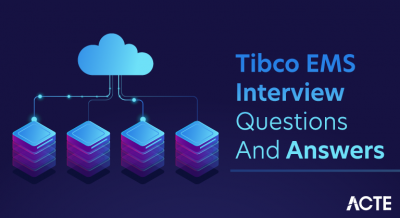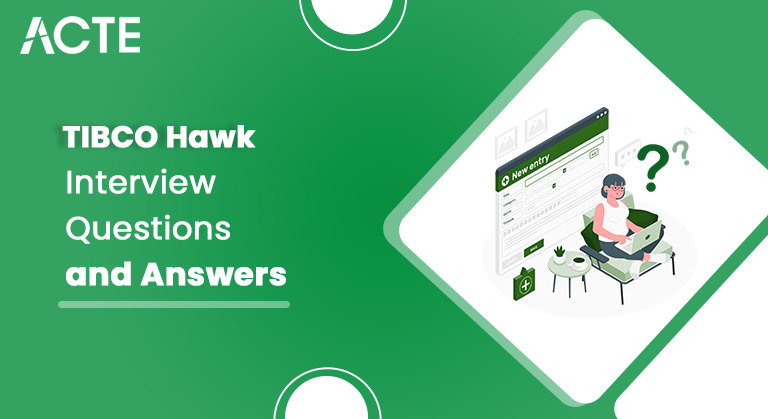
TIBCO Hawk is a robust monitoring and management tool designed to oversee distributed applications and systems in real time. It enables organizations to proactively monitor performance, track key metrics, and detect anomalies across various IT environments. Hawk’s capabilities include:
- Alerting administrators to potential issues.
- Ensuring system reliability.
- Facilitating quick resolutions through its integration with incident management systems.
1. What is TIBCO Hawk?
Ans:
TIBCO Hawk is a sophisticated monitoring and management tool designed for TIBCO environments, offering real-time visibility into both applications and infrastructure components. It allows administrators to proactively monitor system performance and health by tracking various metrics and providing alerts for potential issues. With its extensive monitoring capabilities, Hawk helps ensure high availability by identifying and addressing problems before they impact operations.
2. Which TIBCO Hawk features are essential?
Ans:
Essential features of TIBCO Hawk include real-time monitoring, which allows administrators to continuously observe system performance and health. Rule-based alerting enables automated notifications when specific conditions or thresholds are met, facilitating prompt responses to potential issues. Dynamic reconfiguration supports adjustments to system settings or resources on the fly, ensuring optimal performance and adaptability.
3. In what ways does TIBCO Hawk support monitoring in real-time?
Ans:
- TIBCO Hawk supports real-time monitoring by employing agents distributed across the infrastructure to continuously gather and analyze performance metrics, event data, and system states.
- This approach ensures that administrators have up-to-the-second visibility into the health and status of applications and infrastructure components.
- By monitoring in real-time, TIBCO Hawk enables proactive intervention and swift responses to any anomalies or issues detected.
4. Describe the TIBCO Hawk idea of rules.
Ans:
- TIBCO Hawk rules are foundational components that define specific conditions, thresholds, and actions within monitored environments.
- These rules are highly configurable, allowing administrators to set parameters based on performance metrics, system health indicators, and event triggers.
- By enforcing these policies, TIBCO Hawk ensures proactive monitoring and management of critical events.
5. What is the difference between proactive and reactive monitoring in TIBCO Hawk?
Ans:
| Feature | Proactive Monitoring | Reactive Monitoring |
|---|---|---|
| Purpose | Anticipate and prevent potential issues | Respond to issues after they occur |
| Approach | Continuously monitor performance trends, capacity, and behavior | Monitor for specific events or alerts indicating problems |
| Mechanism | Uses predictive analytics and predefined rules | Relies on real-time alerts and incident reports |
| Action | Triggers alerts based on predictions to allow preemptive measures | Triggers alerts in response to detected issues or failures |
6. How is alerting handled by TIBCO Hawk?
Ans:
TIBCO Hawk manages alerting by continuously monitoring predefined rules and thresholds against incoming data streams from monitored applications and systems. These rules are configured to detect specific conditions indicative of potential issues or deviations from expected performance metrics. When a rule condition is met, Hawk promptly triggers an alert notification. This notification is delivered to administrators or automated systems, ensuring they can swiftly investigate and address the underlying problem.
7. Describe the TIBCO Hawk’s Microagent concept.
Ans:
- Microagents in TIBCO Hawk are specialized monitoring agents deployed within applications or components.
- They gather specific metrics and health information locally, providing granular visibility into application behaviour without impacting overall system performance.
- Microagents enhance monitoring accuracy and efficiency.
8. Does TIBCO Hawk have the ability to make automatic corrections?
Ans:
- TIBCO Hawk emphasizes proactive monitoring and alerting rather than direct automatic corrections. It continuously monitors system health and performance metrics according to predefined rules and thresholds.
- When a rule condition is met, such as an anomaly or performance degradation, Hawk promptly notifies administrators through alerts. This early warning system enables administrators to investigate issues promptly and take appropriate corrective actions.
9. In what ways does TIBCO Hawk support dynamic reconfiguration?
Ans:
TIBCO Hawk supports dynamic reconfiguration, enabling administrators to adjust monitoring configurations, rules, and thresholds without needing to restart applications or services. This capability allows for real-time modifications that adapt to changing operational conditions, improving system flexibility and responsiveness. By making adjustments on the fly, TIBCO Hawk helps maintain optimal performance and alignment with evolving business needs.
10. What is the TIBCO Hawk Rulebase used for?
Ans:
The TIBCO Hawk Rulebase stores and manages rule definitions used for monitoring and alerting. It centralizes rule management, enabling administrators to configure, modify, and prioritize rules based on application priorities and operational objectives. The Rulebase ensures consistent monitoring across TIBCO environments while facilitating effective incident management.
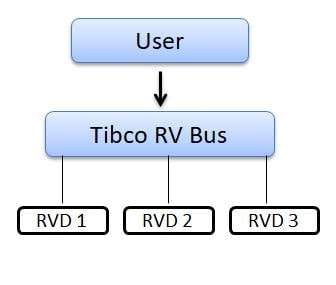
11. What is the role of TIBCO Hawk in an enterprise architecture?
Ans:
- TIBCO Hawk is a vital component in enterprise architecture, providing real-time monitoring and management of distributed applications and systems.
- It ensures the stability, reliability, and performance of critical services by detecting and responding to issues promptly. Hawk enables proactive monitoring, alerts, and corrective actions, contributing to enhanced operational efficiency and minimized downtime.
12. How does TIBCO Hawk integrate with TIBCO Enterprise Message Service (EMS)?
Ans:
- TIBCO Hawk integrates seamlessly with TIBCO EMS by leveraging EMS’s monitoring and management capabilities. Hawk monitors EMS queues, topics, connections, and message traffic in real time, providing insights into message throughput, latency, and error rates.
- It uses Microagents to gather EMS-specific metrics and triggers alerts based on predefined thresholds or rules. This integration enhances visibility and control over messaging infrastructure, ensuring optimal performance and reliability.
13. Can TIBCO Hawk monitor non-TIBCO applications and services?
Ans:
Yes, TIBCO Hawk supports the monitoring of non-TIBCO applications and services through its flexible monitoring architecture. It can integrate with external applications via standard protocols like HTTP, JMX, SNMP, and custom scripts, enabling monitoring of metrics such as CPU usage, memory, database connections, and application-specific parameters. Hawk’s extensible framework allows customization through Microagents and adapters, facilitating seamless integration with diverse IT landscapes.
14. Explain the concept of Hawk Display in TIBCO Hawk.
Ans:
Hawk Display in TIBCO Hawk provides a centralized console for visualizing real-time monitoring data and metrics across monitored entities. It offers customizable dashboards and views, allowing administrators and operators to track the health, performance, and status of applications, systems, and infrastructure components. Hawk Display aggregates data from distributed Hawk agents and presents it in a unified interface, facilitating quick identification of anomalies, trends, and critical alerts.
15. What are the different types of alerts that TIBCO Hawk can generate?
Ans:
- TIBCO Hawk can generate various types of alerts based on predefined rules, thresholds, and monitoring conditions. These alerts include threshold breaches for metrics such as CPU utilization, memory usage, and message queue depths.
- It can also trigger alerts for connectivity issues, performance degradation, abnormal behaviour patterns, and system failures. Hawk supports customizable alert actions, such as sending notifications via email, SMS, SNMP traps, or invoking automated corrective actions.
16. How does TIBCO Hawk handle performance monitoring?
Ans:
- TIBCO Hawk handles performance monitoring by continuously collecting and analyzing metrics related to system resources, application components, and transactional processes.
- It monitors metrics such as CPU utilization, memory usage, response times, throughput, and error rates in real-time. Hawk uses configurable thresholds and rules to detect performance anomalies and deviations from normal behaviour.
17. What security features does TIBCO Hawk offer?
Ans:
TIBCO Hawk offers robust security features to protect monitoring data, configurations, and communications within enterprise environments. It supports secure communication channels using SSL/TLS encryption for data transmission between Hawk agents and consoles. Hawk provides authentication mechanisms such as username/password, LDAP integration, and Kerberos authentication for access control.
18. How does TIBCO Hawk ensure the high availability of monitoring services?
Ans:
TIBCO Hawk ensures high availability of monitoring services through clustering and fault-tolerant configurations. It supports the deployment of multiple Hawk agents and consoles in a clustered setup, distributing monitoring workloads and ensuring redundancy. Hawk agents can operate in active-passive or active-active modes, enabling seamless failover and continuity of monitoring operations in case of agent failures or network issues.
19. What does a TIBCO Hawk agent do?
Ans:
A TIBCO Hawk agent serves as a critical component deployed on every monitored server or application within a TIBCO environment. Its primary role encompasses the continuous collection of performance metrics, monitoring of system health, and communication with the centralized Hawk display and rule. By gathering real-time data on resource utilization, application behaviour, and operational status, the agent provides administrators with comprehensive insights into the overall health and performance of their TIBCO infrastructure.
20. Does TIBCO Hawk support the monitoring of cloud-based applications?
Ans:
Yes, TIBCO Hawk supports the monitoring of cloud-based applications by integrating with cloud platforms and services through standard APIs and protocols. It can monitor metrics such as resource utilization, application performance, and service availability across cloud environments. Hawk adapts to dynamic scaling and provisioning of cloud resources, providing visibility into cloud-based applications, microservices, and infrastructure components.
21. How does TIBCO Hawk handle monitoring of distributed systems?
Ans:
- TIBCO Hawk monitors distributed systems by deploying agents on each node, which collect and send metrics to a central Hawk Display.
- It tracks performance, health, and connectivity across nodes, enabling proactive management and alerting for any anomalies or failures.
- This distributed monitoring ensures comprehensive oversight of system behaviour and facilitates quick response to issues before they escalate, which is crucial for maintaining system reliability and performance.
22. Can TIBCO Hawk integrate with external monitoring tools?
Ans:
Yes, TIBCO Hawk supports integration with external monitoring tools through its APIs and adapters. It can ingest data from various monitoring sources, consolidate information in its centralized Hawk Display, and trigger alerts based on predefined thresholds and conditions. This interoperability allows organizations to leverage existing investments in monitoring infrastructure while enhancing visibility and control through Hawk’s comprehensive monitoring and management capabilities.
23. Explain the concept of thresholds in TIBCO Hawk monitoring.
Ans:
Thresholds in TIBCO Hawk define predefined limits or conditions that, when exceeded or met, trigger alerts or actions. They are set for metrics such as CPU usage, memory utilization, or response times to monitor system health and performance. By configuring thresholds appropriately, administrators can proactively identify potential issues before they impact operations, ensuring optimal performance and reliability across monitored systems.
24. What are the deployment options for TIBCO Hawk agents?
Ans:
- TIBCO Hawk agents can be deployed in standalone mode on individual servers or embedded within applications and services. They can also operate in a distributed mode where multiple agents are deployed across nodes in a networked environment.
- Additionally, agents can be configured to run as microagents for monitoring specific components or subsystems, providing flexibility in deployment to suit diverse monitoring requirements and infrastructures.
25. How does TIBCO Hawk manage the monitoring of clustered environments?
Ans:
- TIBCO Hawk employs cluster-aware agents that monitor each node within a cluster and aggregate metrics from all nodes into a unified view. It tracks cluster health, load balancing, and resource utilization to ensure optimal performance and availability.
- Hawk’s ability to monitor distributed components and interdependencies within clusters enables administrators to detect and address issues proactively, maintaining high availability and reliability of clustered environments.
26. What role does TIBCO Hawk play in troubleshooting and diagnostics?
Ans:
TIBCO Hawk facilitates troubleshooting and diagnostics by providing real-time visibility into system metrics, logs, and performance indicators. It enables administrators to correlate events, analyze trends, and identify root causes of issues impacting application or system performance. With its alerting capabilities and historical data analysis, Hawk supports rapid problem resolution, reducing downtime and enhancing overall system reliability and operational efficiency.
27. How does TIBCO Hawk handle monitoring of real-time data streams?
Ans:
TIBCO Hawk integrates with streaming data platforms such as Apache Kafka or TIBCO StreamBase to monitor real-time data streams. It captures and analyzes metrics related to data throughput, latency, and error rates, ensuring smooth data flow and identifying potential bottlenecks or anomalies. By monitoring data streams in real-time, Hawk helps organizations maintain data integrity, optimize processing efficiency, and respond promptly to emerging issues or trends.
28. What reporting capabilities does TIBCO Hawk provide?
Ans:
- TIBCO Hawk offers customizable dashboards and reports that visualize performance metrics, alert trends, and system health status. It supports the generation of scheduled or ad-hoc reports summarizing key monitoring parameters, trends, and historical data.
- These reporting capabilities enable stakeholders to gain insights into system performance, compliance with SLAs, and overall operational efficiency, supporting informed decision-making and continuous improvement initiatives.
29. How does TIBCO Hawk handle the monitoring of transactional data?
Ans:
TIBCO Hawk monitors transactional data by capturing metrics related to transaction volumes, processing times, and success rates. It tracks transactions across distributed systems or application components, ensuring transactional integrity and identifying potential issues or delays. By monitoring transactional data in real-time, Hawk helps organizations optimize transaction processing, detect anomalies, and maintain high reliability and consistency in transactional workflows.
30. What role does TIBCO Hawk play in capacity planning?
Ans:
- TIBCO Hawk supports capacity planning by providing insights into resource utilization, workload trends, and performance metrics across monitored systems.
- It helps administrators forecast future resource requirements based on historical data and projected growth patterns.
- By analyzing capacity metrics and trends, Hawk facilitates proactive scaling of infrastructure, optimizing resource allocation, and ensuring sufficient capacity to meet business demands effectively.
31. Can TIBCO Hawk monitor APIs and web services?
Ans:
TIBCO Hawk can indeed monitor APIs and web services by integrating with HTTP-based monitoring solutions. It utilizes HTTP/SOAP agents to send requests and receive responses, allowing it to monitor endpoint availability, response times, and status codes. Hawk agents can be configured to trigger alerts based on predefined thresholds or anomalies in API behaviour, ensuring proactive monitoring and rapid issue resolution.
32. How does TIBCO Hawk handle monitoring of databases and data warehouses?
Ans:
TIBCO Hawk monitors databases and data warehouses through specialized agents that connect directly to database systems. These agents execute SQL queries to retrieve metrics such as query performance, table sizes, and connection status. Hawk supports monitoring for various database platforms, enabling administrators to track resource utilization, identify bottlenecks, and ensure optimal database performance.
33. Explain the role of SNMP in TIBCO Hawk monitoring.
Ans:
- TIBCO Hawk uses SNMP (Simple Network Management Protocol) to monitor network devices and infrastructure components.
- Hawk’s SNMP agent communicates with SNMP-enabled devices to collect performance metrics, interface statuses, and operational data.
- This data is crucial for monitoring network health and identifying issues such as bandwidth congestion or device failures.
34. How does TIBCO Hawk handle monitoring of message queues?
Ans:
- TIBCO Hawk monitors message queues by deploying specialized agents that connect to messaging middleware such as TIBCO EMS or JMS providers.
- These agents monitor queue depths, message rates, and consumer activity to ensure efficient message processing and queue management.
- Hawk alerts administrators to potential issues like message backlogs or queue overflows, enabling proactive troubleshooting and system optimization.
35. What is the role of historical data in TIBCO Hawk monitoring?
Ans:
Historical data in TIBCO Hawk provides valuable insights into system performance trends, resource utilization patterns, and operational behaviours over time. By analyzing historical metrics, administrators can identify long-term trends, forecast capacity requirements, and detect anomalies or recurring issues. Hawk’s historical data storage supports reporting, capacity planning, and compliance auditing, enhancing decision-making and proactive management strategies.
36. How does TIBCO Hawk handle monitoring of network infrastructure?
Ans:
TIBCO Hawk monitors network infrastructure by deploying network monitoring agents that collect metrics such as latency, packet loss, and device availability. These agents interact with network devices via SNMP or ICMP protocols, enabling real-time monitoring of network health and performance. Hawk alerts administrators to network issues like connectivity failures or performance degradation, facilitating prompt resolution and minimizing downtime.
37. Explain the role of dashboards in TIBCO Hawk.
Ans:
- Dashboards in TIBCO Hawk provide visual representations of monitored metrics, offering administrators and stakeholders intuitive insights into system health and performance.
- Customizable dashboards display real-time and historical data trends, key performance indicators (KPIs), and alerts in a centralized interface.
- This visual representation enables quick identification of issues, trend analysis, and decision-making support.
38. What is the process for setting up monitoring with TIBCO Hawk?
Ans:
- Setting up monitoring with TIBCO Hawk involves deploying Hawk agents across the infrastructure components to be monitored.
- Agents are configured to collect relevant metrics and communicate with the Hawk management server.
- Administrators define monitoring rules, thresholds, and alerting policies based on business requirements.
- Integration with external systems and tools may be configured to enhance monitoring capabilities.
39. How does TIBCO Hawk handle the monitoring of IoT devices?
Ans:
TIBCO Hawk monitors IoT devices by leveraging specialized agents that interface with IoT protocols such as MQTT or CoAP. These agents collect sensor data, device statuses, and operational metrics from IoT endpoints. Hawk facilitates real-time monitoring of IoT device connectivity, data ingestion rates, and device performance. Alerts can be configured for conditions like device disconnection or abnormal sensor readings, enabling proactive maintenance and troubleshooting.
40. What role does TIBCO Hawk play in monitoring transactional integrity?
Ans:
TIBCO Hawk ensures transactional integrity by monitoring end-to-end transaction flows across distributed systems. Hawk agents track transaction initiation, processing steps, and completion status to detect anomalies or failures in transactional workflows. Alerts can be triggered for transaction delays, failures, or inconsistencies, enabling rapid investigation and resolution. Hawk’s transaction monitoring capabilities ensure data consistency, adherence to business rules, and compliance with service level agreements (SLAs).
41. How does TIBCO Hawk handle monitoring of containerized applications?
Ans:
- TIBCO Hawk monitors containerized applications by deploying lightweight agents within each container or at the host level.
- These agents collect performance metrics, health status, and logs from containers, providing real-time visibility into resource usage, application performance, and container orchestration.
- Hawk integrates seamlessly with container management platforms like Kubernetes, allowing it to auto-discover and monitor containerized services dynamically.
42. What are the licensing considerations for TIBCO Hawk?
Ans:
TIBCO Hawk’s licensing typically considers factors like the number of monitored applications, the scale of deployment (e.g., number of agents or monitored instances), and additional features required (e.g., advanced analytics or integration capabilities). Licensing models may vary from per agent to per instance or based on the number of monitored metrics and the level of support required.
43. How does TIBCO Hawk handle monitoring of virtualized environments?
Ans:
TIBCO Hawk monitors virtualized environments by deploying agents on virtual machines (VMs) or hypervisors. These agents collect performance metrics, system health, and resource utilization data from virtualized hosts and VMs. Hawk supports integration with popular virtualization platforms like VMware and Hyper-V, enabling administrators to monitor virtual machine states, network traffic, and storage performance.
44. Explain the role of correlation in TIBCO Hawk alerting.
Ans:
- Correlation in TIBCO Hawk alerting refers to the process of analyzing multiple events or conditions to identify significant patterns or dependencies that could indicate a potential issue or anomaly.
- By correlating events across different systems, applications, or components, Hawk can determine the root cause of alerts more accurately and reduce false positives.
- This capability helps prioritize alerts based on their impact on business operations, enabling administrators to take timely corrective actions and maintain system reliability and performance.
45. What is the role of event-driven monitoring in TIBCO Hawk?
Ans:
- Event-driven monitoring in TIBCO Hawk enables real-time responsiveness to critical events or changes in monitored systems.
- Instead of polling at fixed intervals, Hawk agents react to events triggered by specific conditions or thresholds, such as system failures, performance degradation, or security breaches.
- This proactive approach ensures immediate visibility into issues as they occur, facilitating rapid detection, diagnosis, and resolution of potential problems before they impact business operations.
46. How does TIBCO Hawk handle monitoring of batch processes?
Ans:
TIBCO Hawk monitors batch processes by capturing events and performance metrics related to batch jobs, schedules, and dependencies. Hawk agents can track the execution status, duration, success/failure rates, and resource consumption of batch jobs across distributed environments. This monitoring capability ensures visibility into batch processing workflows, allowing administrators to monitor job completion times, detect delays or failures, and optimize resource allocation and scheduling.
47. What is the role of machine learning in TIBCO Hawk monitoring?
Ans:
Machine learning in TIBCO Hawk enhances monitoring by analyzing historical data patterns, identifying anomalies, and predicting potential issues or performance trends. By applying ML algorithms to collected metrics and event data, Hawk can detect deviations from normal behaviour, forecast future resource demands, and recommend proactive measures to prevent downtime or performance bottlenecks.
48. How does TIBCO Hawk handle monitoring of middleware components?
Ans:
- TIBCO Hawk monitors middleware components by deploying agents that collect metrics, events, and health status from middleware servers, queues, and services.
- Hawk supports integration with various middleware platforms, such as TIBCO EMS, IBM MQ, Apache Kafka, and others, enabling comprehensive visibility into message throughput, latency, queue depths, and server availability.
- This monitoring capability ensures proactive detection of issues such as message processing delays, server failures, or connectivity issues, allowing administrators to maintain optimal performance and reliability of middleware infrastructures.
49. Can TIBCO Hawk integrate with DevOps tools and processes?
Ans:
Yes, TIBCO Hawk integrates with DevOps tools and processes via APIs and plugins. It supports CI/CD pipelines, configuration management, and orchestration platforms, enabling seamless monitoring and management of applications. Integration with tools like Jenkins, Ansible, Docker, and Kubernetes enhances automated deployment, monitoring, and scaling, fostering collaboration between development and operations teams.
50. What are the best practices for implementing TIBCO Hawk in an enterprise environment?
Ans:
- Define clear monitoring objectives and metrics aligned with business goals.
- Design a scalable architecture to accommodate growth and dynamic workload demands.
- Implement robust security measures to protect sensitive monitoring data and configurations.
- Conduct regular performance tuning and optimization to ensure efficient resource usage.
- Establish proactive alerting and incident response workflows to mitigate risks promptly.
51. What is the role of TIBCO Hawk in monitoring business processes?
Ans:
- TIBCO Hawk monitors business processes by tracking key performance indicators (KPIs), identifying bottlenecks, and ensuring processes adhere to defined workflows.
- It provides real-time visibility into process execution, alerting stakeholders to deviations from expected behaviours.
- By correlating events across systems, Hawk facilitates proactive management of process health and efficiency, enabling timely intervention and continuous improvement.
52. How does TIBCO Hawk handle monitoring of security events?
Ans:
TIBCO Hawk monitors security events by integrating with security information and event management (SIEM) systems. It collects and analyzes security-related data from various sources, detecting anomalies and suspicious activities in real time. Hawk triggers alerts based on predefined security rules, enabling swift response to potential threats and ensuring adherence to security policies across the enterprise.
53. Can TIBCO Hawk integrate with anomaly detection systems?
Ans:
Yes, TIBCO Hawk can integrate with anomaly detection systems to enhance monitoring capabilities. By analyzing historical and real-time data patterns, Hawk identifies deviations from normal behaviour, flags anomalies, and triggers alerts. This integration empowers organizations to proactively detect and mitigate irregularities in system performance, improving operational resilience and security posture.
54. Explain the role of TIBCO Hawk in monitoring data quality.
Ans:
TIBCO Hawk monitors data quality by validating data integrity, consistency, and compliance with predefined standards. It performs continuous checks on data inputs and outputs, identifying discrepancies or errors that could impact decision-making or business operations. Hawk alerts stakeholders to data quality issues, facilitating prompt corrective actions and ensuring reliable and trustworthy data across systems.
55. How does TIBCO Hawk handle monitoring of API gateways?
Ans:
- TIBCO Hawk monitors API gateways by tracking API performance metrics, including response times, throughput, and error rates.
- It captures and analyzes API usage patterns and behaviours, ensuring APIs meet service level agreements (SLAs) and performance expectations.
- Hawk provides visibility into API interactions, detects potential bottlenecks, and facilitates proactive management to optimize API gateway performance and reliability.
56. What role does TIBCO Hawk play in monitoring service level agreements (SLAs)?
Ans:
- TIBCO Hawk monitors SLAs by continuously measuring key metrics such as response times, availability, and throughput of critical services.
- It compares actual performance against predefined SLA thresholds, generating alerts and reports on SLA compliance.
- Hawk enables proactive monitoring of service health, facilitates timely interventions to meet SLA commitments, and supports data-driven decisions to enhance service delivery.
57. How does TIBCO Hawk handle monitoring of distributed transactions?
Ans:
TIBCO Hawk monitors distributed transactions by tracing transactional flows across interconnected systems and components. It captures transactional metadata, identifies dependencies, and monitors transaction execution times and outcomes in real time. Hawk correlates transactional data with performance metrics, detects anomalies or failures in transaction processing, and alerts stakeholders to ensure transactional integrity and reliability.
58. Explain the role of predictive analytics in TIBCO Hawk monitoring.
Ans:
Predictive analytics in TIBCO Hawk enables forecasting of system behaviour and performance based on historical data trends and patterns. It uses machine learning algorithms to analyze data correlations, predict potential issues or failures, and prescribe proactive measures. Hawk’s predictive capabilities help preemptively address performance bottlenecks, optimize resource allocation, and enhance overall system reliability and efficiency.
59. What are the scalability considerations for TIBCO Hawk?
Ans:
- TIBCO Hawk’s scalability considerations include its ability to efficiently manage a growing number of monitored components, agents, and data volumes without compromising performance.
- It supports horizontal scaling by distributing monitoring tasks across multiple nodes and clusters.
- Hawk employs lightweight agents and optimized communication protocols to minimize overhead, ensuring scalability while maintaining real-time monitoring and alerting capabilities.
60. How does TIBCO Hawk handle monitoring of file systems and directories?
Ans:
- TIBCO Hawk monitors file systems and directories by tracking file creation, modification, and deletion events in real time.
- It captures metadata such as file size, permissions, and timestamps, ensuring data integrity and compliance with regulatory requirements.
- Hawk monitors file system usage metrics, detects file system errors or anomalies, and triggers alerts to facilitate timely resolution and maintain uninterrupted file operations across the enterprise.
61. What is the role of custom metrics in TIBCO Hawk monitoring?
Ans:
Custom metrics in TIBCO Hawk allow organizations to monitor specific performance indicators tailored to their applications or infrastructure. These metrics can provide deeper insights beyond standard monitoring parameters, helping to track unique aspects of system health or business processes. By defining and monitoring custom metrics, users can proactively identify trends, performance bottlenecks, or anomalies, enabling timely adjustments and optimizations to improve overall system efficiency and reliability.
62. How does TIBCO Hawk handle monitoring of operating system parameters?
Ans:
TIBCO Hawk monitors operating system parameters by deploying lightweight agents on target systems that collect real-time data on CPU usage, memory utilization, disk I/O, and network activity. These metrics are then analyzed and displayed through Hawk’s centralized monitoring interface, allowing administrators to track system health, detect resource bottlenecks, and ensure optimal performance.
63. Can TIBCO Hawk integrate with continuous integration/continuous deployment (CI/CD) pipelines?
Ans:
Yes, TIBCO Hawk integrates with CI/CD pipelines to continuously monitor applications and infrastructure throughout the development lifecycle. By connecting with tools like Jenkins or GitLab CI, Hawk automatically tracks deployments, performance metrics, and application health post-deployment, enabling quick identification and resolution of issues or performance regressions to maintain reliability and performance.
64. What are the security considerations for deploying TIBCO Hawk agents?
Ans:
- Security considerations for TIBCO Hawk agents include ensuring secure communication channels between agents and the Hawk server, implementing authentication mechanisms to verify agent identities, and encrypting sensitive data transmitted over the network.
- Agents should be configured with the least privileged access to limit exposure to potential vulnerabilities. To mitigate security risks, agents should be updated and patched regularly, and audit logs should be monitored to detect and respond to unauthorized access or anomalies promptly.
65. How does TIBCO Hawk handle monitoring of infrastructure as code (IaC)?
Ans:
- TIBCO Hawk can monitor infrastructure as code (IaC) deployments by integrating with configuration management tools such as Ansible, Chef, or Terraform.
- It monitors changes in infrastructure configurations, detects deviations from desired states defined in IaC scripts, and alerts administrators to potential misconfigurations or drifts.
- By monitoring IaC deployments, Hawk ensures that infrastructure changes align with organizational policies, compliance requirements, and best practices, thereby maintaining consistency, reliability, and security across environments.
66. Explain the role of machine-to-machine communication in TIBCO Hawk.
Ans:
Machine-to-machine communication in TIBCO Hawk enables agents and monitoring components to exchange real-time data, alerts, and commands autonomously. This communication facilitates proactive monitoring and automated responses to system events or performance thresholds. It supports dynamic adjustments, such as scaling resources based on workload changes, optimizing application performance, and ensuring continuous availability.
67. How does TIBCO Hawk handle monitoring of application logs?
Ans:
TIBCO Hawk monitors application logs by parsing and analyzing log files generated by monitored applications. It extracts relevant metrics, error messages, performance indicators, and other critical data points to detect anomalies, identify trends, and troubleshoot issues effectively. Hawk’s log monitoring capabilities include real-time log aggregation, searching, filtering, and alerting based on predefined log patterns or keywords.
68. Can TIBCO Hawk integrate with log management and analysis tools?
Ans:
Yes, TIBCO Hawk can integrate with log management and analysis tools such as Splunk, ELK Stack (Elasticsearch, Logstash, Kibana), or TIBCO LogLogic. The integration allows Hawk to stream monitored data, including metrics and logs, to external log management platforms for centralized storage, analysis, and visualization. This integration enhances operational visibility and facilitates comprehensive log analysis, event correlation, and forensic investigation.
69. What role does TIBCO Hawk play in monitoring cloud service providers (e.g., AWS, Azure)?
Ans:
- TIBCO Hawk monitors cloud service providers by integrating with native APIs and SDKs to collect real-time metrics, performance data, and operational insights from cloud-based resources.
- It monitors critical metrics such as compute instance health, storage utilization, network performance, and service availability across multiple cloud platforms.
- Hawk’s cloud monitoring capabilities enable administrators to ensure optimal cloud resource utilization, detect performance bottlenecks, troubleshoot issues, and enforce SLAs.
70. How does TIBCO Hawk handle monitoring of real-time analytics?
Ans:
- TIBCO Hawk handles the monitoring of real-time analytics by capturing and analyzing streaming data, events, and metrics generated by real-time analytics platforms or applications.
- It integrates with streaming data frameworks such as Apache Kafka, TIBCO Streaming, or AWS Kinesis to ingest, process, and monitor real-time data streams.
- Hawk’s real-time analytics monitoring capabilities include measuring data throughput, latency, and processing rates and detecting anomalies or deviations from expected patterns.
71. What are the compliance considerations for TIBCO Hawk in regulated industries?
Ans:
In regulated industries, TIBCO Hawk must adhere to strict regulatory requirements such as GDPR, HIPAA, and PCI DSS. It ensures data privacy through encrypted communications and secure storage of monitoring data. Access controls are crucial, limiting who can view or modify monitoring configurations and data. Audit trails and logging are maintained to track changes and access. Regular security assessments and compliance audits verify adherence to industry standards.
72. Explain the role of event correlation in TIBCO Hawk monitoring.
Ans:
Event correlation in TIBCO Hawk links related events across multiple sources to identify meaningful patterns or anomalies. It helps in understanding the root cause of issues by correlating events based on predefined rules. This correlation reduces alert noise by aggregating related events into meaningful incidents. It enhances troubleshooting efficiency and proactive monitoring by identifying issues before they escalate.
73. How does TIBCO Hawk handle monitoring of container orchestration platforms (e.g., Kubernetes)?
Ans:
- TIBCO Hawk integrates with Kubernetes by deploying lightweight agents (microagents) within containers or as sidecars.
- These agents monitor container health, resource usage, and performance metrics.
- They capture Kubernetes-specific events and manage container lifecycle events.
- Hawk’s centralized dashboard provides visibility into Kubernetes clusters, alerting administrators to potential issues.
74. What is the role of business activity monitoring (BAM) in TIBCO Hawk?
Ans:
- TIBCO Hawk’s BAM monitors and analyzes business processes in real time, providing insights into operational performance.
- It tracks key performance indicators (KPIs) and alerts stakeholders to deviations from predefined thresholds.
- BAM in Hawk correlates events across applications and systems, offering a holistic view of business activities.
- It enables proactive decision-making by identifying bottlenecks or inefficiencies in workflows.
75. How does TIBCO Hawk handle monitoring of infrastructure metrics (CPU, memory, disk)?
Ans:
- TIBCO Hawk collects infrastructure metrics through agents installed on servers or virtual machines.
- These agents monitor CPU usage, memory consumption, disk I/O, and network traffic in real-time.
- Hawk’s dashboard displays metrics trends and generates alerts based on predefined thresholds.
- It supports historical data analysis for capacity planning and performance optimization. Hawk integrates with monitoring tools like SNMP and JMX for comprehensive infrastructure monitoring.
76. Can TIBCO Hawk monitor custom applications and proprietary protocols?
Ans:
Yes, TIBCO Hawk supports monitoring custom applications and proprietary protocols through custom-built micro agents. These micro agents are developed using Hawk’s API, enabling monitoring of specific application metrics and events. Hawk’s extensible architecture accommodates diverse monitoring requirements, from legacy systems to modern applications. It captures custom application performance data and generates alerts based on customized thresholds.
77. Explain the role of data visualization in TIBCO Hawk monitoring.
Ans:
Data visualization in TIBCO Hawk translates monitoring data into graphical representations such as charts, graphs, and dashboards. It provides a clear and intuitive view of system health, performance trends, and operational metrics. Visualization tools in Hawk enable real-time monitoring and historical analysis, aiding in decision-making and troubleshooting. Interactive dashboards allow users to drill down into specific metrics or periods for deeper insights.
78. How does TIBCO Hawk handle monitoring of data streaming platforms (e.g., Kafka)?
Ans:
- TIBCO Hawk integrates with data streaming platforms like Kafka by deploying specialized micro agents to monitor topics, partitions, and consumer groups.
- These microagents capture metrics such as message throughput, latency, and error rates in real time.
- Hawk’s centralized monitoring dashboard provides visibility into Kafka clusters and identifies performance bottlenecks or anomalies.
- It supports proactive alerting and capacity planning for optimized data streaming operations.
79. What role does TIBCO Hawk play in monitoring compliance with internal policies?
Ans:
- TIBCO Hawk enforces compliance with internal policies by monitoring system configurations, access controls, and operational practices.
- It audits configurations against predefined security baselines and compliance standards.
- Hawk generates alerts for policy violations, ensuring timely remediation and adherence to governance frameworks.
- It tracks user activities and changes to critical settings, maintaining an audit trail for accountability and regulatory requirements.
80. How does TIBCO Hawk handle monitoring of microservices architectures?
Ans:
TIBCO Hawk monitors microservices architectures by deploying lightweight micro agents within each service instance. These micro agents capture metrics such as service uptime, response times, and error rates. Hawk aggregates metrics across microservices and visualizes dependencies within distributed systems. It correlates events to identify cross-service issues and facilitates root cause analysis. Hawk’s dynamic discovery capabilities adapt to changing microservices environments, ensuring continuous monitoring without service disruption.
81. Explain the role of fault tolerance in TIBCO Hawk monitoring.
Ans:
Fault tolerance in TIBCO Hawk ensures continuous monitoring by gracefully handling failures. It includes mechanisms like agent redundancy and failover configurations to maintain monitoring integrity. TIBCO Hawk monitors agent health and availability, automatically reallocating tasks to functional agents. This ensures that monitoring operations remain robust even in the event of component failures.
82. How does TIBCO Hawk handle monitoring of remote and distributed locations?
Ans:
- TIBCO Hawk deploys lightweight agents across remote and distributed locations.
- These agents monitor local applications and services, reporting metrics and alerts to a central Hawk server.
- Communication between remote agents and the Hawk server is optimized for low latency and reliability.
- Hawk’s architecture supports secure data transmission over networks, including VPNs and private connections.
83. Can TIBCO Hawk integrate with ticketing and incident management systems?
Ans:
Yes, TIBCO Hawk integrates seamlessly with ticketing and incident management systems such as ServiceNow and JIRA. Integration is achieved through APIs and webhooks that facilitate automatic ticket creation based on alerts. Hawk can trigger workflows in incident management systems based on predefined rules and thresholds. This ensures timely response and resolution of issues identified by Hawk’s monitoring capabilities. Integration with ticketing systems enables IT teams to track and manage incidents efficiently.
84. What is the role of performance benchmarking in TIBCO Hawk monitoring?
Ans:
Performance benchmarking in TIBCO Hawk involves comparing current performance metrics against predefined standards. It helps establish baseline performance expectations for applications and infrastructure components. Hawk monitors key performance indicators (KPIs) such as response times, throughput, and resource utilization. Deviations from established benchmarks trigger alerts, indicating potential performance issues or optimizations.
85. How does TIBCO Hawk handle monitoring of data encryption and security protocols?
Ans:
- TIBCO Hawk supports monitoring of data encryption and security protocols through dedicated microagents.
- These microagents track encryption status, cipher suites, and compliance with security policies.
- Hawk integrates with cryptographic libraries and APIs to monitor encryption critical management practices.
- It verifies the implementation and adherence of security protocols such as TLS/SSL across monitored systems.
86. Explain the role of proactive monitoring in TIBCO Hawk.
Ans:
- Proactive monitoring in TIBCO Hawk involves anticipating and preventing potential issues before they impact operations.
- It includes monitoring performance trends, capacity thresholds, and application behaviour patterns.
- Hawk uses predictive analytics and machine learning algorithms to forecast potential failures or bottlenecks.
- Alerts are triggered based on predictive models, allowing preemptive action to prevent downtime or service degradation.
87. How does TIBCO Hawk handle monitoring of disaster recovery processes?
Ans:
TIBCO Hawk monitors disaster recovery processes by tracking key metrics and milestones in recovery plans. It monitors replication status, failover readiness, and recovery time objectives (RTOs) across distributed environments. Hawk ensures continuous availability of critical services during disaster recovery exercises and actual incidents. Alerts are triggered for deviations from expected recovery timelines or performance thresholds.
88. What is the role of data aggregation in TIBCO Hawk monitoring?
Ans:
Data aggregation in TIBCO Hawk involves consolidating and summarizing monitoring data from multiple sources. It combines metrics from distributed agents into cohesive views and reports for analysis. Aggregated data provides a comprehensive overview of system health, performance trends, and operational metrics. Hawk supports real-time aggregation and historical data analysis for trend identification and anomaly detection.
89. How does TIBCO Hawk handle monitoring of APIs for external partners?
Ans:
- TIBCO Hawk monitors APIs for external partners by tracking API usage, response times, and error rates.
- It validates API endpoints, payload formats, and adherence to API contracts and standards.
- Hawk ensures compliance with SLAs and monitors API availability and performance from end-user perspectives.
- Alerts are triggered for API failures, latency spikes, or violations of predefined thresholds.
90. Can TIBCO Hawk integrate with business process management (BPM) tools?
Ans:
Yes, TIBCO Hawk integrates with BPM tools to monitor and manage business processes across the enterprise. Integration is achieved through adapters and connectors that facilitate data exchange and synchronization. Hawk monitors BPM workflows, process instances, and transactional data for performance and compliance. It provides visibility into process execution, bottlenecks, and deviations from expected workflows. Integration with BPM tools enables end-to-end monitoring of business operations and process automation.


